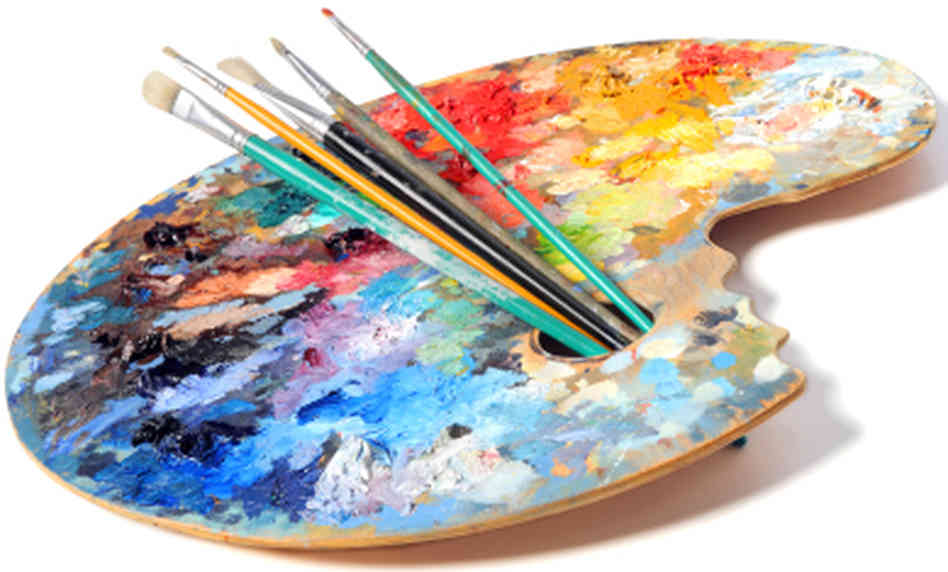The Development of Trump Art: From Very Early Reviews to Contemporary Point Of Views
The Development of Trump Art: From Very Early Reviews to Contemporary Point Of Views
Blog Article
Exploring the Diverse Globe of Artistic Expression: From Surrealism to Abstract Realism
In the realm of imaginative expression, from the dreamlike landscapes of surrealism to the complex play of light and type in abstract realistic look, artists have actually continuously pressed the borders of creative thinking and imagination. Each movement holds an unique lens whereby the world is viewed and interpreted, providing a glance into the depths of human emotion, perception, and thought. As we discover the diverse globe of art, we are presented with a tapestry of designs, methods, and ideologies that test our understanding and prompt reflection. The journey with these varied kinds of creative expression promises to unwind a rich tapestry of visual storytelling and intellectual inquiry that astounds the mind and stirs the heart.
Surrealism: Releasing the Subconscious
Surrealism, an avant-garde imaginative activity of the 20th century, dug into the depths of the subconscious, unveiling a globe of dream-like images and non-traditional juxtapositions. Led by artists like Salvador Dali, René Magritte, and Joan Miró, Surrealism looked for to challenge the conventional means of understanding and seeing art. Through methods such as automatism and dream analysis, Surrealist artists aimed to take advantage of the unconscious mind to disclose surprise truths and desires.
One of the crucial elements of Surrealism was the focus on the illogical and the exceptional. By integrating unanticipated components in their works, Surrealist musicians aimed to create a sense of disorientation and surprise in the audience. This disturbance of reasoning and factor was indicated to prompt a deeper expedition of the subconscious and the enigmas of the human mind.
Abstract Realism: Redefining Perception
Challenging standard creative limits, Abstract Realistic look redefines assumption through the combination of well-known components with abstract types. This innovative technique to art incorporates the representational precision of realistic look with the innovative freedom of abstraction, providing visitors a special aesthetic experience that triggers them to examine their understanding of reality.
In Abstract Realism, musicians strive to capture the essence of their subjects while also instilling their deal with a sense of deepness and intricacy via abstract elements. By blending the familiar with the unfamiliar, these musicians invite audiences to engage with their pieces on multiple degrees, motivating them to check out the subtleties of shade, kind, and texture.

Cubism: Fragmentizing Truth
Using fragmented viewpoints and geometric kinds, Cubism reinvented the artistic depiction of reality in the early 20th century. This approach not just deconstructed fact however likewise emphasized the monotony of the canvas, leading the means for future abstract art activities.

Cubism can be categorized right into two major stages: Analytical Cubism, defined by monochromatic color pattern and intricate, fragmented types; and Synthetic Cubism, which incorporated collage components and brighter shades right into the structures. Via these unique phases, Cubism affected not only paint yet also style, sculpture, and style. trump art. Its influence reverberated across the art world, inspiring artists to check out brand-new means of interpreting and representing the globe around them
Expressionism: Feelings on Canvas
Exploring the midsts of human emotions via expressive and vivid brushstrokes, Expressionism emerged as an extensive imaginative activity in the very early 20th century. Unlike previous art activities that concentrated on illustrating the external globe, Expressionism looked into the internal world of the artist's subconscious, intending to evoke raw feelings and prompt natural actions from viewers.
Expressionist artists, such as Edvard Munch, Egon Schiele, and Emil Nolde, denied standard concepts of appeal and realistic look in support of read review distorting kind and color to convey subjective feelings. Using overstated brushwork, vibrant shades, and altered figures helped produce a feeling of unease, alienation, or enthusiasm in their jobs.
Among one of the most renowned instances of Expressionism is Munch's "The Scream," which records the extreme stress and anxiety and anguish of contemporary life via its swirling, altered figure versus a blood-red skies. Via their mentally billed works, Expressionist musicians sought to challenge standard imaginative standards and give a home window right into the rough depths of the human heart.
Contemporary Art: Developing Viewpoints

One of the defining qualities of contemporary art is its constant advancement and capacity to adjust to changing cultural landscapes. Artists are significantly integrating modern technology right into their method, blurring the lines between the electronic and physical worlds. This blend of tools permits cutting-edge means of storytelling and engaging with audiences in a much more interactive way.
Moreover, modern art frequently functions as a platform for social discourse, attending to pushing problems such as identity, politics, and the atmosphere. Artists are utilizing their work to provoke and spark vital conversations idea, clarifying the complexities of the world we stay in. As point of views remain to develop, modern art continues to be a prominent and vibrant pressure in forming our social landscape.
Conclusion
Finally, the world of imaginative expression incorporates a large range of designs and motions, each with its own distinct approach to sharing definition and feeling. From surrealism's expedition of the subconscious to abstract realism's redefining of perception, and from cubism's fragmentation of truth to expressionism's portrayal of emotions, art remains to advance and challenge viewpoints - trump art. Contemporary art reflects the ever-changing world we live in, providing brand-new means to interpret and understand the intricacies visit this site of our fact
As we explore the diverse globe of art, we are provided with view a tapestry of styles, methods, and ideologies that challenge our understanding and provoke reflection. Its effect reverberated throughout the art world, inspiring artists to check out brand-new ways of analyzing and representing the world around them.

Report this page